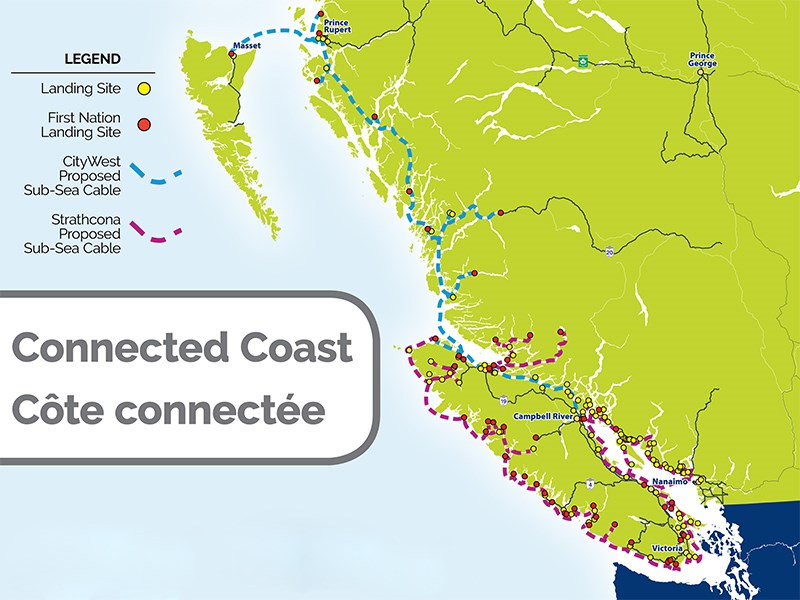Powell River Regional District has been included on a list of areas that will receive new or faster internet service through a $45.4-million joint initiative by the federal and provincial governments announced on January 17.
The infrastructure project will not affect City of Powell River residents and points along a line of fibre-optics installed by Telus beginning in 2015. The biggest impact is likely to be felt in Lund.
Tla’amin Nation hegus Clint Williams said he welcomed the news.
“The immediate benefit to us is with the Lund Hotel that we own and the land we own surrounding Lund,” said Williams.
Economic development in aboriginal tourism in Lund is one of the priorities of Tla’amin Management Services, which handles business affairs for the first nation.
Tla’amin currently has high-speed connectivity through existing fibre optics that follow Highway 101 from Saltery Bay to the edge of Tla’amin lands at Southview Road.
According to a list provided by the provincial government, locations in the region that will now be serviced with high-speed internet capacity include Barney’s Bar, Black Point, Bliss Landing, Brew Bay, Gillies Bay, Lang Bay, Lasqueti Island, Lund, Myrtle Point, Pine Tree Road, Saltery Bay, Stillwater and Van Anda.
“All of those communities and along the coastline will have similar access,” said BC minister of citizens’ services Jinny Sims.
Twincomm, the current internet service provider for the Lund region and Texada Island, was involved in discussions from the outset with project initiator Strathcona Regional District.
As distributor of the new high-speed internet, Twincomm sees the project as an exciting business opportunity, according to company general manager Constantinos Tsakonas.
“Telus doesn't give us the bandwidth up here that allows us to push our internet out further and it’s so expensive it makes it really hard to grow in this community,” said Tsakonas.
With the new service, it will limit increases in customer fees, he added.
The project will create a backbone for a coastal network with new or updated high-speed internet service running between Prince Rupert, Vancouver and around Vancouver Island connected via a 3,500-kilometre subsea cable, where most of the investment will be spent for backbone networks.
“The reality of the rugged and disparate BC coastline with lots of elevation changes and thick forests is that wireless doesn't penetrate to get people connected,” said Powell River computing consultant Joseph McLean, who has presented three reports on the region’s internet service and gap areas.
“These people can't get on cellular, let along a high-speed internet connection over wireless in many places, such as Okeover and Saltery Bay,” said McLean. “There are no details whether it will be brought to gap areas.”
The project announcement included funding for last-mile connections to households that do not have high-speed internet, but whether or not that will address gap areas was not explained. Infrastructure will be built in phases over three to five years, subject to an approval process.
Sims said the high-speed super highway will address critical emergency and disaster-alert management and connect businesses, educational facilities, hospitals, governments and libraries to networks supporting essential services.



